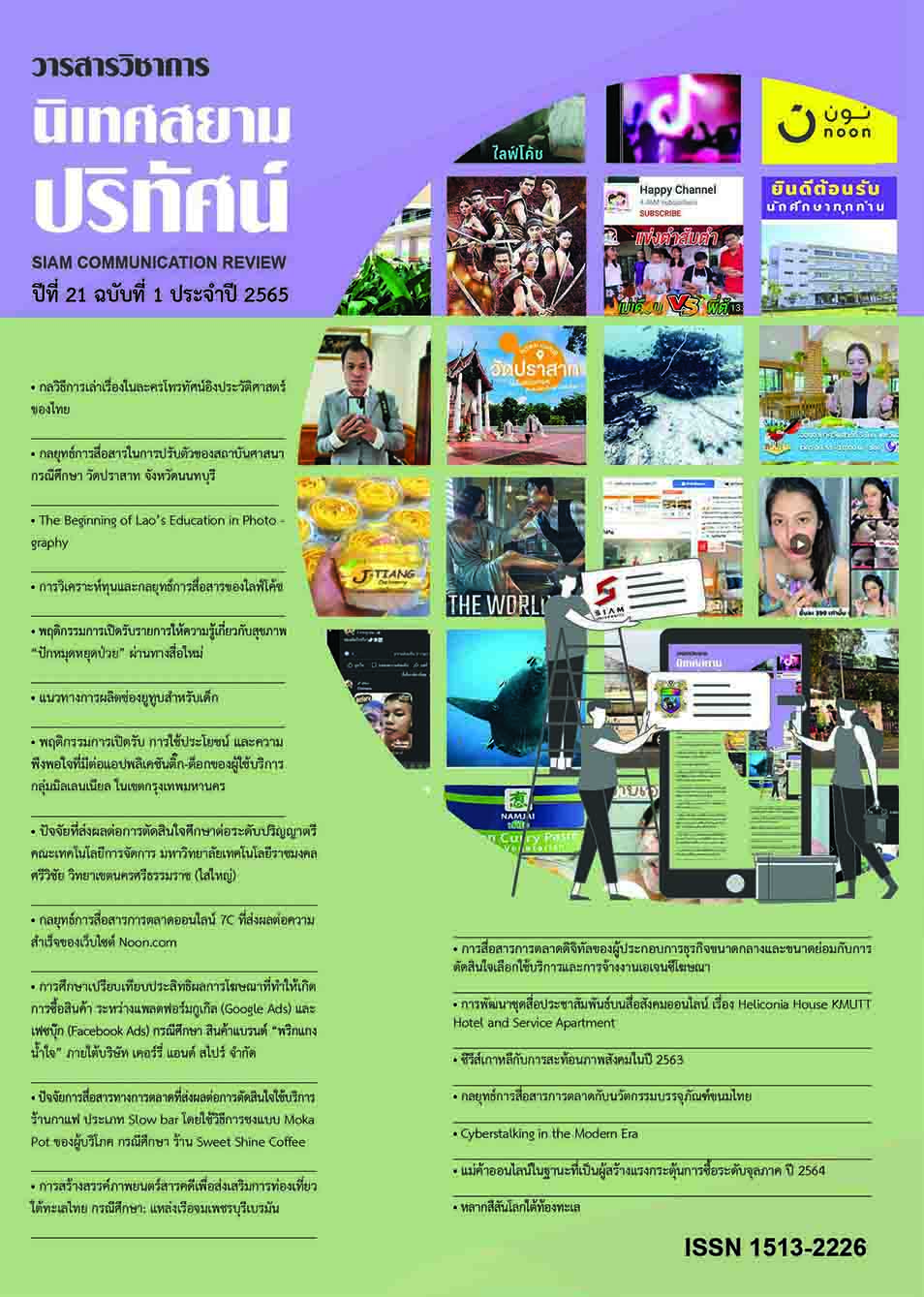Adaptive Communication Strategies of Religious Institutions: A Case Study of Wat Prasat, Nonthaburi Province
Main Article Content
Abstract
The objectives of this study were to examine 1) historical and current temple communication strategies; and 2) the historical and current role and function of the temple as media focus. Qualitative research was done with data collected by observation, informal interviews and in-depth interviews with samples who were stakeholders living in and beyond the community. Data was analyzed according to concepts and theories related to secularization, functionalism, and communication strategy.
Results were that contextual and societal changes decreased the previous stature of Wat Prasat, Nonthaburi as a sacred site. Communication strategic attempts to secularize sacred areas included adapting them for new generations in terms of sender, receiver, message, and channel by focusing on visitors from outside the community to expand the audience. Altered and updated communication strategies dynamically affected the current role and function of the temple, but some traditional roles and duties persisted, maintaining its status as a religious institution.
These findings suggest that the current communication strategy for Wat Prasat, Nonthaburi combines ethical and marketing communication approaches. By adapting and choosing appropriate consumer communications strategies, the temple will persuade participants to attend temple activities regularly and remain loyal through generational disparities.
Article Details

This work is licensed under a Creative Commons Attribution-NonCommercial-NoDerivatives 4.0 International License.
References
ภาษาไทย
กาญจนา แก้วเทพ. (2539). สื่อส่องวัฒนธรรม. กรุงเทพฯ: อมรินทร์พริ้นติ้งแอนด์พับลิชชิ่ง.
กาญจนา แก้วเทพ และ ทิฆัฆพร เอี่ยมเรไร. (2554). การสื่อสาร ศาสนา กีฬา. กรุงเทพฯ: เอดิสันเพรสโปรดักส์.
กาญจนาณัฐ ประธาตุ. (2560). พุทธศาสนากับสังคมไทย : การยืนหยัดและท้าทายในรอบทศวรรษ (พ.ศ. 2548-2558). วารสารศิลปการจัดการ, 1(2), 106.
ต่อจรัส พงษ์สาลี. (2547). พิพิธภัณฑ์ท้องถิ่นไทยกับบทบาทของวัดในฐานะสื่อกลางในการฟื้นฟูวัฒนธรรมระดับท้องถิ่น มุมมองจากการทบทวนประวัติศาสตร์และพัฒนาการของงานพิพิธภัณฑสถานไทย. (รายงานการวิจัย). กรุงเทพฯ: ศูนย์มานุษยวิทยาสิรินธร.
นนทญา หงส์รัตน์. (2550). กลยุทธ์การสื่อสารเพื่อการพัฒนาแบบมีส่วนร่วมของเกษตรกรในโรงเรียนชาวนา จังหวัดสุพรรณบุรี. วิทยานิพนธ์ปริญญามหาบัณฑิต, คณะนิเทศศาสตร์ สาขาวิชานิเทศศาสตร์.จุฬาลงกรณ์มหาวิทยาลัย.
สุภางค์ จันทวานิช. (2555). ทฤษฎีสังคมวิทยา. กรุงเทพฯ: จุฬาลงกรณ์มหาวิทยาลัย.
อุทิศ จึงนิพนธ์สกุล. (2528). วิวัฒนาการเศรษฐกิจวัดไทย. กรุงเทพฯ: สร้างสรรค์.
ระบบออนไลน์
นัฐวุฒิ สิงห์กุล. (2557). Public Anthropology. เข้าถึงได้จาก http://nattawutsingh.blogspot.com/2014/01/blog-post_7038.html
ยุกติ มุกดาวิจิตร. (2555). เคาะกะลาสังคมวิทยาและมานุษยวิทยาสยาม. เข้าถึงได้จาก https://socanth.tu.ac.th/blogs/yukti-sagsnet-11/


